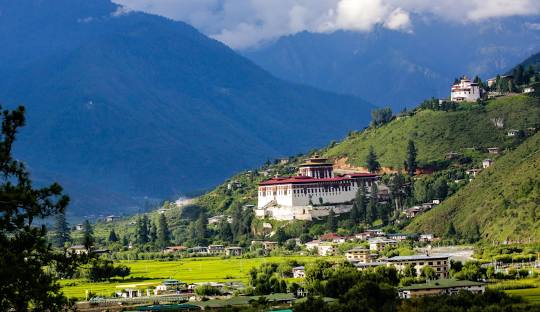Paro, Bhutan
🏔️ Paro, Bhutan: Gateway to Himalayan Spirituality
Nestled in the scenic Paro Valley, Paro is Bhutan's cultural heart and the gateway to the nation's rich heritage and natural beauty. Home to the iconic Tiger’s Nest Monastery and a plethora of sacred sites, Paro offers travelers a serene blend of spirituality, history, and breathtaking landscapes.
📍 Where is Paro?
Paro is located in western Bhutan, approximately 65 kilometers (40 miles) west of the capital, Thimphu. The town is accessible via the Paro International Airport, the only international airport in Bhutan, which receives flights from cities like Kathmandu, Delhi, and Bangkok. The journey from Paro to Thimphu takes about 1.5 to 2 hours by road.
🏯 Top Attractions in Paro
🕍 Tiger’s Nest Monastery (Paro Taktsang)
Perched on a cliffside 3,120 meters above sea level, this legendary monastery is a must-visit. According to legend, Guru Padmasambhava meditated here in the 8th century. The hike to the monastery offers panoramic views of the valley.
🏰 Rinpung Dzong
A fortress-monastery overlooking the Paro Chhu River, Rinpung Dzong serves as the administrative and religious center of the valley. Its architecture and murals are exemplary of Bhutanese craftsmanship.
🏞️ Chele La Pass
Located at an altitude of 3,988 meters, Chele La Pass is one of the highest motorable points in Bhutan. It offers stunning views of the Himalayan peaks, including Jomolhari and Jichu Drake.
🏯 Drukgyel Dzong
Although in ruins, this fortress holds historical significance as it was built to commemorate Bhutan's victory over Tibetan invaders. The dzong offers a glimpse into Bhutan's medieval past.
🏯 Kyichu Lhakhang
One of Bhutan's oldest temples, Kyichu Lhakhang is believed to have been built in the 7th century. It holds immense religious significance and is a peaceful retreat for visitors.
🍽️ Culinary Delights
Bhutanese cuisine is characterized by its use of chili peppers and cheese. In Paro, you can savor:
-
Ema Datshi: A spicy dish made with chili peppers and cheese.
-
Momos: Steamed dumplings filled with meat or vegetables.
-
Suja: Traditional butter tea made with tea leaves, butter, and salt.
-
Red Rice: A staple in Bhutanese meals, often served with various dishes.
🏨 Accommodation Options
Paro offers a range of accommodations to suit different preferences:
-
Luxury: Aman Kora Paro – An exclusive resort offering luxury and tranquility.
-
Mid-Range: Taj Tashi – A blend of traditional Bhutanese architecture and modern amenities.
-
Budget: Hotel Jigmeling – A budget-friendly option with basic amenities.
🚗 Getting Around
While Paro lacks public transportation, visitors can hire taxis or private vehicles for sightseeing. Walking is also a pleasant way to explore the town, especially around the Paro Chhu River and Rinpung Dzong.
📅 Best Time to Visit
The optimal times to visit Paro are during spring (March to May) and autumn (September to November). These seasons offer clear skies, mild temperatures, and vibrant festivals. Spring is particularly special due to the Paro Tshechu, a religious festival featuring traditional mask dances and music performances.


